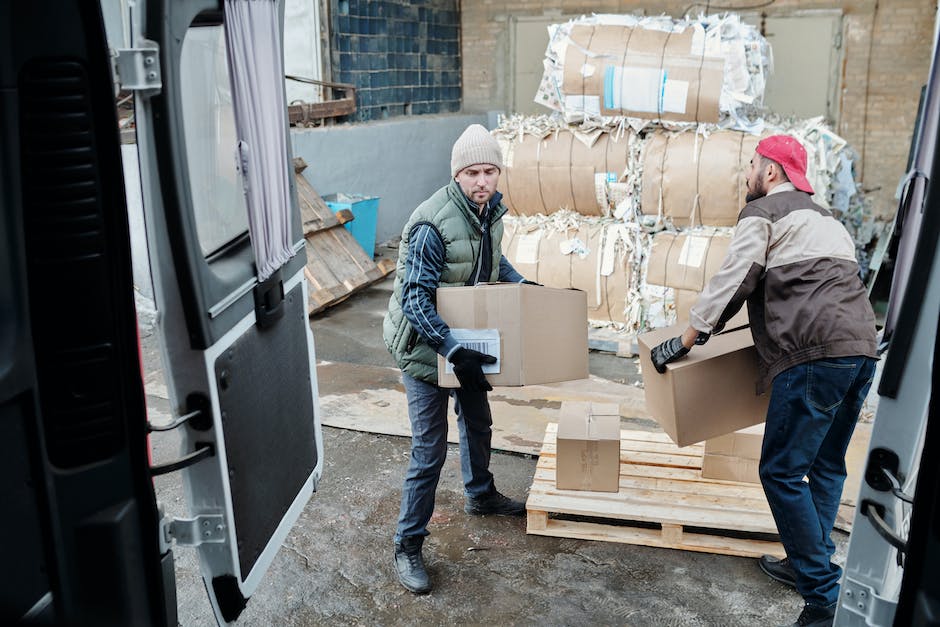The professional movers industry is a dynamic and essential sector that encapsulates the movement of individuals and businesses alike, acting as a barometer for various economic and cultural trends. With an ever-expanding market, fueled by the ebbs and flows of the real estate landscape, corporate relocations, and the cultural gravitation towards urban environments, this industry stands at the forefront of service evolution. Through diligent analysis of growth patterns, market size, and the driving economic factors, one gains a comprehensive understanding of the competitive environment where key industry players maneuver to offer seamless relocation services. This essay embarks on an insightful journey exploring the fundamental aspects of professional moving, from pricing stratagems to regulatory frameworks, innovational technology integration, environmental stewardship, and the art of customer service excellence.
Industry Overview
Navigating the Dynamic Terrain of the Professional Movers Industry
In the ever-evolving tapestry of the professional movers industry, understanding the current state of play is not merely advantageous – it’s an imperative. With burgeoning customer expectations and advances in technology reshaping the contours of this sector, industry insiders are constantly on the move, paving the way for innovation and service excellence.
Today’s professional movers industry finds itself at the intersection of tradition and transformation. On one side, there’s an enduring need for meticulous planning, robust logistics, and a human touch that reassures clients during the inherently stressful process of relocation. On the other, we’re witnessing the integration of cutting-edge tech solutions, ranging from logistics software, mobile applications offering real-time tracking, to AI-driven customer service platforms.
Market trends suggest a shift toward a more service-centric model, where customization and convenience reign supreme. Clients not only demand that their belongings are transported from point A to B but also seek a seamless, holistic service experience. This includes add-ons such as packing and unpacking, temporary storage solutions, and specific handling for high-value items.
Competitive differentiation now hinges on service diversification, with movers venturing into niches like pet relocation, vehicle transport, and even concierge services to cater to a clientele that seeks more than just muscle. Every touchpoint is an opportunity to exceed expectations and secure customer loyalty in an industry with a customer base that’s inherently transitional.
Sustainability is another arena where movers are making significant headway. Green moving solutions are not just a fad; they reflect an industry responding to a global call for environmental responsibility. From reusable packing materials to eco-friendly vehicles, movers are increasingly incorporating sustainable practices that resonate with a planet-conscious market.
The pandemic’s indelible mark on the industry cannot be overlooked. While it introduced substantial challenges, including safety protocols and disrupted supply chains, it also accelerated innovation. Virtual consultations and contactless services, once a differentiator, have now become industry standards.
On the financial front, the movers industry continues to be ripe for investment, and strategic partnerships abound. Consolidation is a continuing trend, as smaller operations merge or are acquired by larger companies seeking to expand service offerings and geographic reach.
In the realm of labor, the ongoing industry pilgrimage toward digitization has not eliminated the need for a skilled and reliable workforce. The human element remains non-negotiable. A harmonious marriage of tech and talent is the Holy Grail for movers looking to carve out their market share and enhance profitability.
Ultimately, the professional movers industry stands as a vital player in the global economy, facilitating mobility, empowering businesses, and catering to the transitory nature of modern life. Shrewd movers who understand this complex matrix and skillfully adapt to its nuances will continue to thrive. Keep in step with the changing tides, and there’s no telling the distance your moving enterprise can cover.

Costs and Pricing Models
Navigating the Pricing Matrix: Dissecting How Professional Movers Set Their Rates
In the bustling professional movers market, pricing isn’t a shot in the dark – it’s a calculated strategy, a dance between staying competitive and maintaining profitability. For those wondering how movers come up with their figures, it’s no mystery: it’s a multi-faceted structure designed to meet consumer demand while safeguarding the bottom line.
To start with, distance plays a pivotal role. Local moves are typically charged by the hour, capitalizing on the crew’s efficiency and speed. Long-distance relocations, however, shift gears into a weight or volume-based pricing strategy. Each pound hauled or cubic foot occupied in the moving truck translates into dollars – encapsulating the cost of fuel, labor, and the wear and tear on the fleet.
But movers don’t stop there. They’ve honed the art of offering tiered services, from basic transport to full-service packing, loading, and unpacking. Want to sit back and direct traffic? Opt for the premium package; those looking for a more hands-on approach can save by selecting a pared-down service level. This not only meters pricing based on service intensity but also maximizes market reach by appealing to different customer preferences and budgets.
Furthermore, add-ons and exclusives pepper the pricing menu. From providing specialty boxes for treasured artworks to securing extra insurance for high-value items, each additional service renders an opportunity to sculpt pricing to the specific needs of the client, while deftly increasing revenue potential per move.
Seasonality also takes a seat at the pricing table. Peak moving periods, like summer months and end-of-the-month windows, often come with a price premium due to increased demand. Conversely, those with flexible timelines can leverage off-peak discounts – a savvy move for budget-conscious consumers and a strategic fill for movers’ schedules during slower periods.
Lastly, the movers’ brand equity and market position serve as underlying pricing influencers. Established industry players may command higher rates based on reputation, reliability, and the peace of mind they promise. Simultaneously, emerging companies might enter the arena with competitive, economically-minded pricing to disrupt the status quo and gain market share.
Underneath the surface, professional movers are conducting a symphony of pricing variables, melding together the tangible and intangible to create a rate that resonates with value perception. While today’s moving landscape is intricate, those who master the art of pricing not only survive but thrive, turning customers into advocates and moves into case studies of success. Pricing, after all, goes beyond numbers; it’s a testament to a mover’s ability to gauge the market’s pulse and adjust their business cadence accordingly.

Regulations and Licensing
Venturing into the realm of professional moving services doesn’t merely demand operational agility and a diverse portfolio of services. It also requires a scrupulous adherence to a framework of regulatory requirements, ensuring consumer protection and industry standards are not just met, but exceeded. Below, we outline critical compliance aspects that professional movers must incorporate into their business models to foster trust, uphold safety, and secure longevity in the marketplace.
Licensing: The Foundation Stone
Legally, to lay the groundwork in the professional movers landscape, obtaining appropriate licensing is paramount. At the federal level, movers that cross state lines need a USDOT (U.S. Department of Transportation) number, essentially a unique identifier that allows the Federal Motor Carrier Safety Administration (FMCSA) to oversee their safety records and compliance. In-state movers, on the other hand, require state-level licensing, which varies by jurisdiction but uniformly seeks to ratify the mover’s credibility.
Insurance: Mitigating Risk, Securing Assurance
Insurance underpins a mover’s promise of safeguarding possessions through transit. To ensure customer peace of mind, professional movers must provide valuation coverage – a pre-agreed amount the company is liable for in the event of damage. Beyond this, reputable players in this sector often offer expanded coverage options, showcasing their commitment to consumer satisfaction and risk management.
Worker’s Compensation: Protecting the Workforce
Personnel on the front lines of the moving process must be insured through worker’s compensation, covering potential job-related injuries. Not only does this assure the workforce of their well-being, but it also shields the business from direct financial liabilities related to workplace accidents.
Transportation of Hazardous Materials: Specialized Compliance
If a mover opts to transport hazardous materials – albeit rare in consumer moves – a whole new tier of regulatory obligations emerges, including specialized training for personnel and adherence to specific handling procedures, reaffirming the mover’s commitment to community and environmental safety.
Annual Inspection: Vehicle Vigilance
Each moving vehicle in a professional fleet must endure annual inspections. Mechanical soundness is non-negotiable, given the need for reliability and efficiency. Substandard equipment doesn’t just risk breakdowns; it gambles with the mover’s reputation.
Transparent Tariffs: No Room for Ambiguity
Movers must provide a published tariff detailing every service offered and its corresponding price. This transparency is not only favored by consumers but required by regulators to prevent deceptive business practices.
Recordkeeping: The Backbone of Accountability
Regulators require diligent recordkeeping, ensuring that operational logs, transaction records, and employee documentation are meticulously maintained for a specified duration. Such practices empower regulatory bodies to perform audits and maintain the integrity of moving services.
Implementing and sustaining these protocols demands robust internal systems, often complemented by legal counsel adept at navigating the ever-evolving regulatory landscape. Prospective entrepreneurs and seasoned veterans alike must regard these requirements not as barriers, but as benchmarks of excellence that when upheld, signal to the market the unmistakable hallmark of a mover’s commitment to exceed industry standards, and embody the epitome of trusted service.

Technology Integration
Emerging Trends in Real-Time Tracking and Automation for Professional Moving Services
The professional moving industry is continuously evolving, and technology is catalyzing revolutionary changes that transcend traditional business models. Real-time tracking technologies and automation are trends setting the pace for a radical transformation in how moving services operate and deliver value to their clients.
Real-Time Tracking and Enhanced Transparency
Imagine a world where you can pinpoint the exact location of your cherished belongings as they’re in transit to your new home. Real-time tracking technology, using GPS and RFID tags, has made this a reality. This technology ensures customers can monitor their possessions at every step of the journey. It’s not merely a convenience; it’s about peace of mind – a crucial currency in the moving industry. Furthermore, it adds a layer of transparency that cultivates trust, encouraging stronger customer relationships.
Automation: Efficiency and Reliability in Moving Operations
Robotics and automation technologies are taking hold of warehousing and inventory management within moving services. Robotic helpers can swiftly and safely load and unload heavy items, reducing the risk of injury and increasing the efficiency of the moving process. Automation isn’t stopping there; it’s revolutionizing customer service through chatbots and automated booking systems, making transaction processes smoother and more efficient.
The Dawn of Autonomous Transport
The future might behold self-driving moving trucks on our highways. The thought might seem far-fetched, but with autonomous vehicles steadily advancing, the moving industry’s interest is piqued. The implications for costs, safety, and efficiency are colossal. As these technologies mature, anticipate a dynamic shift in how logistics are handled within the industry.
Customized Experiences Through Artificial Intelligence
Customization is no longer a luxury but a necessity for staying competitive. Artificial intelligence (AI) plays a crucial role by analyzing customer data to provide personalized service recommendations and enhancing the user’s experience. AI allows movers to anticipate the customer’s needs and tailor services accordingly, from scheduling to the unboxing experience.
The Blockchain Dimension
Blockchain could soon usher in a new era of security and efficiency for the movers industry. By allowing for a decentralized and tamper-proof ledger of transactions and documentation, it ensures the authenticity of the records and eliminates concerns over fraud and mismanagement. Its potential for smart contracts can automate and enforce agreements between the mover and client, providing yet another layer of security and trust.
The Convergence of Tech and Human Skill
While technology advancements promise significant leaps in service offerings and efficiency, none of this negates the importance of skilled, human touch. A blend of tech-enabled services and knowledgeable professionals characterizes the future of moving services. This hybrid model ensures that while technology streamlines the process, the personal element remains intact, offering empathy and experience that technology alone cannot replicate.
In sum, technology is not just shaping but actively reinventing the professional moving services industry. It delivers unprecedented levels of efficiency, transparency, customization, and security – all while reaffirming the critical role of human expertise. In a world driven by mobility and change, technology ensures that the movers industry stays not just relevant but indispensable.

Sustainability Practices
Professional Movers: Pioneering Sustainable Practices to Drive the Future
In an age of climate awareness, professional movers are not bystanders. They are, in fact, forerunners in championing eco-friendly operations that resonate with the pulse of today’s market demands. Sustainability is not just a buzzword in this dynamic industry; it has evolved into a series of strategic implementations aimed at reducing carbon footprints and fostering a healthier relationship with our environment.
Eco-friendly Materials: Upending Packaging Norms
Reinventing materials has become a cornerstone for movers committed to sustainability. The traditional cardboard boxes and bubble wrap are making way for biodegradable, reusable, and recycled alternatives. With a surge in demand for eco-conscious packing materials, movers now offer a selection of innovative options, from cornstarch-based “peanuts” to mushroom packaging that astonishingly blends agrarian by-products and mycelium. These advancements signal a new paradigm where sustainability is both a practical and ethical consideration for packing services.
Fuel Efficiency: The Quest for a Greener Move
The roaring engines of moving trucks are receiving a transformative recalibration toward greener alternatives. Professional movers are increasingly turning to biodiesel fuels and hybrid electric vehicles, considerably lowering the emission rates traditionally associated with big moves. By adopting fleet telematics systems, movers are capable of monitoring vehicle performance and optimizing routes to ensure the most efficient fuel consumption. This not only benefits the environment—this streamlined approach translates into cost savings for the customer as well.
Renewable Energy Sources: Empowering Operations
The operations of moving companies extend beyond the road—they encompass warehouses, offices, and storage facilities. Scaling up the use of solar panels and wind energy, movers are producing renewable power to run their day-to-day operations. Investment in renewable energy presents a clear message: professional movers are not merely adapting to a trend; they are investing in a sustainable future.
Education and Training: Cultivating a Green Mindset
Sustainability extends beyond equipment and materials—it’s about mindset. Forward-thinking movers are rigorously training staff in environmentally-friendly practices. From the correct recycling of materials to avoiding unnecessary waste, education ensures that every team member becomes an active participant in the company’s mission towards environmental stewardship.
Community Engagement: Building Sustainable Alliances
It’s not just about altering internal practices—integration with the broader community is pivotal. Professional movers are engaging in alliances with local environmental initiatives to foster urban tree planting programs and neighborhood clean-up efforts. This societal involvement shapes the image of movers as a responsible and crucial aspect of the larger community, one that is keen on giving back and growing roots in sustainable development.
Closing the Loop: Embracing a Circular Economy
The circular economy is gaining traction amongst movers seeking to minimize waste. By implementing programs that allow clients to return used boxes, which then are either reused or properly recycled, the loop is closed on wasteful single-use practices. This circular economy approach not only provides a more sustainable moving solution but instills in customers the confidence that they are partnering with a business that values ecological responsibility.
As the winds of change sweep across the professional movers industry, adopting sustainable practices is not just about keeping up with the times—it’s about leading the charge into a future where business success and environmental consciousness are not mutually exclusive, but harmoniously integrated. Professional movers are standing at the vanguard, demonstrating unequivocally that innovation and sustainability can propel both industry growth and ecological balance alike.

Customer Service Excellence
In the realm of professional moving services, going that extra mile for clients can set a company apart from its competitors. Discerning customers seek an unparalleled level of attentiveness that can only be described as ‘white glove’ service. This bespoke approach to client handling involves curating an experience that is deeply personalized and anticipates every conceivable need.
Communication, often an overlooked asset, is pivotal when defining premier customer service. From the initial engagement to the final follow-up after a move, the quality of interaction must be impeccable. Movers that leverage omnichannel communication ensure that clients can reach out and receive updates through their preferred mediums, be it phone, email, text, or even via sophisticated chatbots that provide instant customer assistance round-the-clock.
Another crucial differentiator is the handling of possessions with utter care and specificity. When movers adopt practices like using custom crating and specialized packing for high-value items, the message sent is clear – every item, regardless of its monetary value, is precious and deserves the utmost protection.
Exceptional service also requires flexibility and the willingness to accommodate unique client schedules. Companies that offer last-minute scheduling or the ability to adjust service dates without hefty penalties showcase a level of empathy that resonates with clients dealing with the unpredictability of relocation.
Empowerment plays a significant role in customer satisfaction. Movers that equip clients with self-service portals where they can track progress, change inventory details, or even pay their bills online foster a sense of control and partnership. This empowerment is doubly effective when backed by human experts ready to assist if the digital experience falls short.
Transparency beyond tariffs and into operations can also uplift service quality. Customers appreciate openness about the moving process itself, which includes comprehensive breakdowns of their inventory, detailed explanations of handling procedures, and clarity on how their belongings will be protected from point A to B.
A stress-free move is a memorable one, and hence top-tier movers craft their service to eliminate stressors. Offering to handle additional move-related tasks, such as setting up utilities, cleaning services, or even home organization upon arrival, can truly enhance the moving experience.
Moreover, a customer-centric moving company keeps pushing the envelope by actively seeking out and incorporating feedback into service enhancements. This ongoing loop of feedback and improvement demonstrates a steadfast commitment to excellence.
At this elite level, moving companies are not just service providers; they’re moving partners, supportive guides on the journey to a new chapter. It’s about the human touch as much as operational diligence, the art of reading between the lines to offer peace of mind that transcends a mere business transaction. In the world of movers, the real distance conquered is that between expectations and exceptional experiences.

Embarking on a meticulous exploration of the multifaceted professional movers industry reveals a sector deeply intertwined with economic vitality and societal shifts. The intricate dance of appeasing regulations, harnessing breakthrough technologies, embedding sustainability, and delivering unparalleled customer service forms the quintessence of a successful moving enterprise. As the industry landscape continues to shift, these pillars of operation serve not only as a guidepost for current enterprise but also as beacons that illuminate the path to future triumphs. The movers that thrive will be those who adeptly balance cost-effectiveness with quality, compliance with innovation, and ecological mindfulness with customer-centric care, reshaping the industry’s silhouette in the modern era.

